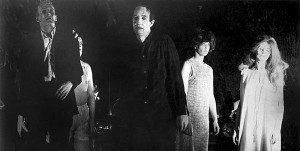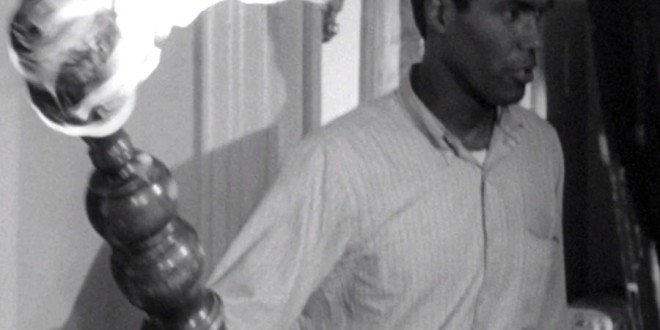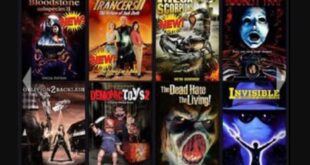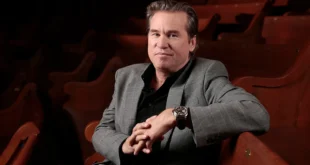Night of the Living Dead (1968) doesn’t necessarily give audiences what they WANT, but it sure as hell gives them what they NEED.
The average American filmgoer is a sucker for happy endings. They want the hero or heroine to struggle against adversity, or overcome societal ills like racism, or, if it’s a genre film, kill the bad guys and get out alive.
Night Of The Living Dead turned all these notions sideways, and my exposure to it at a young age left an indelible impression on me about the power of cinema. More importantly, it taught me how the world really works, and what to expect from it.
Now, it’s not my favorite horror film because it’s scary. Make no mistake: It IS scary. The final, claustrophobic zombie assault on the farmhouse will forever fill my guts with shaved ice. And it’s not my favorite because it’s gory, although it’s THAT, too. Even in glorious black and white, the gut-munching scenes still manage to turn me off my food.

Nope, George A. Romero’s opening salvo in the zombie genre holds my #1 slot because it’s the cinematic equivalent of the Leonard Cohen song, Everybody Knows. It’s one hour and 37 minutes of non-stop bad decisions, lack of communication, egoism, and bigotry. It’s a microcosm of humanity in everyday life. It depicts how we all-too-often interact with others, and how we view ourselves in the context of a group. It portrays thought processes that we don’t want to contemplate, much less talk about.
I first saw Night Of The Living Dead at 12 years-old, in the way it was intended: A midnight broadcast on a small, black-and-white TV in our den. I was terrified. My young brain had never wrapped its head around anything so bleak. And those rescue stations the characters learn about on TV? Those were in towns CLOSE TO ME. That brought things home to me on an extremely uncomfortable level.
It didn’t help that there was this creepy, Dr. Demento-type host during the commercials who would ask the audience stuff like, “Are they at YOUR house yet?”
And yes, at least twice I peeked out the window to check.

Since then, I’ve watched Night Of The Living Dead close to a hundred times, and I have yet to notice ONE light moment in the entire film. Hell, even The Exorcist (1973) has at least one or two scenes that pass as humor.
Throw in the infamous ending, and something in my adolescent brain snapped. Ben (Duane Jones) suffered through all THAT just to get mistakenly shot for a zombie?
But that’s just it, isn’t it? Important lessons are rarely easy to handle. Night Of The Living Dead was part of a handful of formative experiences that molded me into a realist. It’s why I believe in talking things out. It’s why I can learn to trust an individual, but very rarely hold faith in an organization. It’s why I seek out answers for myself.
As you can imagine, growing up to work with Night Of The Living Dead co-writer John Russo in Killer Campout (2017) was both surreal and gratifying. In many ways, it completed a circle that started in that dark den all those years ago.
Truth is often ugly, but I’ll take it every time.
 PopHorror Let's Get Scared
PopHorror Let's Get Scared




